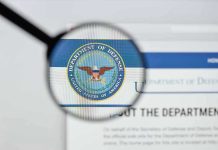
AI chatbots, once hailed as the future of digital convenience, are now handing hackers a master key to your banking accounts—and the tech giants behind them are scrambling to clean up a mess they helped create.
At a Glance
- AI-generated phishing attacks have surged by over 1,200% since 2022, with financial losses spiraling into the billions annually.
- Chatbots routinely suggest inaccurate or unclaimed banking links, which hackers quickly turn into convincing phishing traps.
- Over a third of AI chatbot-provided banking login links direct users to domains not owned by real companies, exposing millions to theft.
- Security experts and the FBI agree: AI-powered phishing is now the top cyber threat—traditional filters and user training are failing to keep up.
- Calls grow louder for tech firms to implement real vetting and for Americans to double down on digital vigilance.
AI Chatbots: From Convenience to Catastrophe
Americans were promised that AI chatbots would make their lives easier, but the reality in 2025 is a digital disaster. Instead of saving users time, these bots are setting them up for financial ruin. When you ask a chatbot for your bank’s login page—something millions now do each month—you’re rolling the dice. According to a Netcraft study, only about two-thirds of the links provided are correct, while a staggering 30% are either unregistered or inactive domains just waiting to be scooped up by cybercriminals. Another 5% lead to completely unrelated websites. Hackers are exploiting this goldmine, registering these unclaimed domains and setting up phishing pages so convincing, even seasoned tech users are falling for them.
The scale of the threat is mind-boggling. Since 2022, AI-generated phishing attacks have exploded by more than 1,200%. By 2025, these attacks became the number one cyber threat, outpacing ransomware and insider breaches combined. The FBI has issued formal warnings: criminals are using generative AI to craft error-free, laser-targeted scams that bypass traditional security and drain accounts in minutes. In one high-profile case, a user requesting the Wells Fargo login page was sent to a phishing site that mimicked the bank’s branding down to the pixel and promptly harvested sensitive information.
Who’s to Blame? Tech Giants, Regulators, and the Rest of Us
The finger-pointing has begun, but the facts are clear: tech companies like OpenAI, Microsoft, and Google have unleashed these chatbots onto the public with shockingly little oversight. Security experts are sounding the alarm—traditional email filters and basic user training simply can’t keep up with the sophistication and scale of AI-driven attacks. In 2024 alone, 67.4% of all phishing campaigns involved some form of AI. The vast majority targeted financial institutions and tech platforms, but everyone is at risk—especially older users and those less tech-savvy, who are more likely to trust a chatbot’s answer without a second thought.
Meanwhile, the regulators and lawmakers who should have seen this coming have been asleep at the switch. There are calls for strict vetting of links, real-time domain validation, and mandatory digital literacy campaigns, but so far, concrete action is in short supply. The cybersecurity industry is cashing in, selling next-generation anti-phishing tools and insurance by the truckload. But the burden has again fallen on everyday Americans to outsmart criminals who have endless AI resources at their disposal, thanks to Silicon Valley’s reckless rush to market.
The Financial and Social Cost: A Wake-Up Call for America
The numbers should be a national scandal. Global phishing losses now ring up to $17,700 every minute, with U.S. banks and their customers bearing the brunt. Small banks and regional credit unions are especially vulnerable, since AI chatbots are less likely to recognize their legitimate domains. The result: countless Americans lose their savings while tech giants and bureaucrats issue hollow reassurances about “improved safety features” that never seem to arrive.
The social impact is just as severe. Trust in AI and digital assistants has cratered. Americans are left anxious, wary of every message and link—even those seemingly provided by trusted technology. Families, businesses, and retirees alike are forced to question every digital interaction, eroding the convenience and optimism that AI once promised. Expert consensus is grim: unless both tech companies and users make radical changes—demanding real accountability, insisting on multi-factor authentication, and learning to spot even the slickest scam—these attacks will only get worse.
What Must Change: Real Accountability, Not Empty Promises
Industry experts, federal agencies, and cybersecurity veterans are united: the time for talk is over. AI companies must be held accountable for the chaos they’ve unleashed. That means rigorous link vetting, transparent reporting of chatbot errors, and ironclad domain validation protocols. It also means a return to common sense values—teaching Americans to trust their instincts, double-check links, and refuse to hand over sensitive information just because a chatbot told them it was safe.
This is about more than technology—it’s about defending the financial security of American families and upholding the common sense values that built this country. AI chatbots may be the latest tool in the hacker’s arsenal, but with vigilance, education, and real accountability, we can make sure they’re not the last word in America’s digital future.













